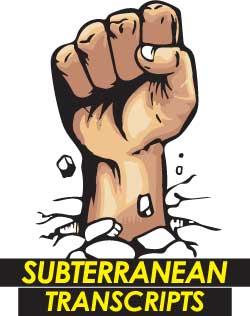Reply To:
Name - Reply Comment
 ‘Scratch a Sinhalese and you find a racist,’ I’ve heard my Tamil friends say. In jest of course. ‘Scratch a Tamil and you find an Eelamist,’ I’ve heard my Sinhalese friends say. In jest of course. ‘Scratch a Muslim and you find a Jihadists,’ I’ve heard people say. In jest of course. Perhaps it is not a laughing matter. Rivers have sources, trees have roots and perceptions have histories or rather are produced by a healthy complement of history, myth and legend. It is often framed by political selectivity which of course is a product of expedience, let us not forget.
‘Scratch a Sinhalese and you find a racist,’ I’ve heard my Tamil friends say. In jest of course. ‘Scratch a Tamil and you find an Eelamist,’ I’ve heard my Sinhalese friends say. In jest of course. ‘Scratch a Muslim and you find a Jihadists,’ I’ve heard people say. In jest of course. Perhaps it is not a laughing matter. Rivers have sources, trees have roots and perceptions have histories or rather are produced by a healthy complement of history, myth and legend. It is often framed by political selectivity which of course is a product of expedience, let us not forget.
Broad brush strokes, that’s what is common. And we’ve seen these in various analyzes of the presidential election results. The country has been carved, so to speak, and it is being consumed in part with relish or dismay, as per choice or diminished circumstances respectively.
So we have an election marked by ‘racism’. True, false, true and false? On the one hand we have the provinces that voted overwhelmingly for Sajith Premadasa (North and East, to the tune of over 80%) where the population is predominantly Tamil and Muslim. The rest of the country, predominantly Sinhala, voted overwhelmingly for Gotabaya Rajapaksa. That’s cutting the result along ethnic lines.
Various explanations have been offered. Perhaps the Tamils submitted to the proposition the Tamil National Alliance (TNA) — ‘Sajith will deliver’. Deliver what? Well, if we go by the conditions for support articulated by the TNA, then it is essentially a road map to Eelam via federalism. On the flip side, it is argued that the Sinhalese were irked by the taunts of Tamil and Muslim communalist parties — ‘you can’t win without us,’ and ‘vote for Sajith and teach the Sinhalese a lesson’. Others argue, ‘Gota is a Sinhala Buddhist chauvinist and the Sri Lanka Podu Jana Peramuna (SLPP) whereas Sajith is not; therefore the minorities voted for Sajith.’
Some have argued that the people in the North and East preferred by quite a margin a Sinhalese (Sajith) as opposed to M.K. Shivajilingam, a Tamil, and therefore ‘race’ was not a factor. That would be simplistic, though. Shivajilingam is a) not from the strongest party in the coalition that makes up the TNA, and b) didn’t have even the slimmest chance to win the election. More logical, it would seem, would be to vote for the candidate who is more likely to deliver demands, which is essentially what the TNA told the people. After all, R. Sampanthan claims, ‘Tamils voted for Sajith to win rights in a united, indivisible Sri Lanka’. That’s sleight of hand. ‘United’ and not ‘Unitary’ as has always been the word-choice of Eelamists. ‘Forego the term but obtain the meaning’ has been Abraham Sumanthiran’s operative dictum as revealed by ‘independent’ elections commissioner Ratnajeevan Hoole.
On the other hand, almost 50% of Tamils live outside the North and East. Who did they vote for? We can’t really get a number on this, but the UNP has counted the Tamils and Muslims outside the North and East as part of its vote base. This means, that counting ‘out’ the TNA vote-loan and taking out the Tamil and Muslim votes from other parts of the country, the UNP’s slice of the Sinhala vote has shrunk to less than 30% or is even hovering around 25%. That’s something the UNP should worry about as it looks ahead to future elections. This element however is not at center of the ‘racist-discourse’.
 It is clear that Gotabaya won the support of large numbers of Sinhala Buddhists. He has acknowledged this instead of pussy-footing around the fact. A certain segment voted, he named and acknowledged. He also said he would not leave behind anyone, whether or not he or she voted for him, as he takes the country forward. He is, as he pointed out, President of everyone. Time will tell how he performs and how the people of the North and East assess his performance.
It is clear that Gotabaya won the support of large numbers of Sinhala Buddhists. He has acknowledged this instead of pussy-footing around the fact. A certain segment voted, he named and acknowledged. He also said he would not leave behind anyone, whether or not he or she voted for him, as he takes the country forward. He is, as he pointed out, President of everyone. Time will tell how he performs and how the people of the North and East assess his performance.
Name-calling is easy and cheap. ‘Racist’ is an easy and cheap label, applicable to one and all on account of things said and left unsaid, things done and refrained from, association and absence of association. Racist, dependent on racists, approver of racism, tolerator of racism — all easily ‘pinnable’ on one and all. It is a useful political tool and has been used extensively. By one and all, one might add, to a lesser or greater degree.
There is one indisputable fact, though, which the new President has not only recognized but has stated that he has noted: the vast majority of voters in the North and East did not have confidence in him. They have, by association at least and perhaps on account of pledges made (verbal and/or written) by Sajith Premadasa, hinted at certain aspirations. Whether these are extrapolations based on myths frilled as history or demands deliberately exaggerated to ‘bargain down’ to something acceptable, we do not know. It is a signal, though.
In 1976, the Tamil United Liberation Front (TULF) under the leadership of S J V Chelvanayakam (of ‘a little now, more later’ fame) resolved in Vaddukoddai to push for a separate state. The TULF scored in the 1977 parliamentary elections consequently. The racism and wild optimism embedded in the resolution notwithstanding, it did strike a chord with the Tamil voter. The question that should have been asked at the time is ‘why?’ That question can be asked today too.
The previous regime saw ‘reconciliation’ as something that can only be obtained by vilifying the Sinhalese and Buddhists and submitting to the Eelamist demands of the TNA (ref: constitutional reform proposals of the Parliamentary Select Committee dominated by federalists and rabid anti-Sinhala and anti-Buddhist persons). That’s a recipe for continued inter-communal tensions and perhaps one reason for the massive surge against the candidate of the UNP-led coalition, one could argue.
Belonging. That could be the key. Inclusivity. Inclusive nationalism, if you will. Racism of course won’t help. Name-calling by way of alleviating political grief is in the end a distraction and even an obstacle to progress. There’s no way around engagement, though. There could be any number of approaches. Every single ‘way out project’ offered by the federalists has failed. Abandoning engagement and pooh-poohing the sense of un-belonging of the Tamils, for example, has not yielded reconciliation either as the results in 2015 and 2019 indicate.
Those who want the future to look different must cure themselves of term-fixations. A new language is required. No, not to facilitate disavowal of problem, but to ensure that its true dimensions are obtained.
The country can be carved in many ways. A cartographer can do it. A divide-rule expert can do it. Words can do it. But cartographer, politician and rhetorician can also eliminate difference and distinction in wholesome ways. Let us see what the Gotabaya Rajapaksa years will yield.
[email protected]. www.malindawords.blogspot.com